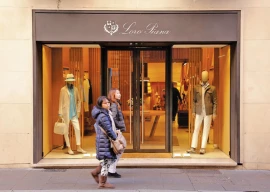
According to UK Telegraph a Swedish charity has created a range of emoticons with bruises, cuts and self-harm wounds for victims to communicate their abuse, when words fail to do so.
Emoji have become a common place on social networking hubs making it the fastest growing language across the globe.
Eight out of 10 people use the little symbols and icons to communicate, whereas a person with a smartphone is obsessed from the smiling faces to the tongue teasers.
However, recently the purpose behind the emoji is changing. They are no longer just being used for fun. A Swedish charity, BRIS (Children's Rights in Society) helps at-risk children and teenagers, has come up with a new set of emoji to try and help the youth.
The social media campaign is called Abused Emojis which introduces a set of symbols with bruises, cuts, self-harm and violence. These emojis can be downloaded on a free app.
The idea behind the emoji is to help young victims that find it difficult to voice their situation verbally to let people know what's happening to them through social media.
Apart from using emojis, women are using coloured drawing on social media to show their support against violence to women and girls.
Women that post an orange face have been sexually abused themselves. While women posting the yellow face know someone that has witnessed sexual violence.
 PHOTO: TELEGRAPH
PHOTO: TELEGRAPH BRIS explains: “A complex reality demands a complex set of symbols. The Abused Emojis make it possible for kids and young people to talk about situations where they felt bad or wrongly treated without having to put words on the situation."
On Twitter, people are speaking up about sexual abuse.
My support to the survivors in Iceland & all around the world! Raise your voices! #konurtala #þöggun #outloud pic.twitter.com/tNopp1mnzU
— Sandra W. (@Memoire_neuve) June 8, 2015
BRIS further adds, “If you or somebody you know have been hurt, mistreated or feel sad, Abused Emojis makes it easier to talk about."
A recent TalkTalk Mobile study found 72 per cent of 18 to 25-year-olds find it easier to put their feelings across using emoji. Thus the new app can be beneficial for young individuals battling an emotional problem, and have no words to express it. In such a situation the best deal is to click on a bruised face.
 PHOTO: TELEGRAPH
PHOTO: TELEGRAPH “It sounds like a really good idea actually,” child psychologist Oliver James tells me.
“What’s impressive about this is it highlights negatives that aren’t expressed in emoji at the moment. You just have things like demons, or angry faces that are quite crude and simplistic.” said Oliver.
The child psychologist says, "I think there’s an insipid ‘have a nice day’ quality to a lot of the conventional emoji. Because they’re so insipid they have to be used in the right sequence. Although young people are very creative in the way they use mixtures of them to communicate various emotions, people vary a great deal in how skilful they are."
But there is surely a downside to this app, for domestic violence victims that are frequently surrounded with the perpetrator.
“A massive problem is the abuser monitoring victim’s phones, so there’s nothing to stop them from coming across this,” explains a spokesperson from national domestic violence charity Women’s Aid.
“That would deter a lot of people from using it. If they’re too threatened to talk about domestic violence in any other circumstance, it doesn’t necessarily follow they’d make use of this," said the spokeperson.
 PHOTO: TELEGRAPH
PHOTO: TELEGRAPH The charity believes that the emoji when used in the right situation could prove to be helpful for the victim, and that there is no problem with the symbols themselves, which shows bruises, a baby being slapped and self-harm scars.
“It’s just an emoji – it’s never going to fully express the complexity of domestic violence. But they’re very clear which is a positive. They’re not funny or silly – they show exactly what’s going on.”
However, there are chances of the symbols being misused, as one online commentator has mocked the emoji showing a boy with a poo symbol on his head, writing: “Send help, my dad pooped on my head.” In reality, the idea behind that particular emoji is to show he feels worthless.
“There’s always the potential for people to misuse them,” says Oliver James. “But there’s a difference between humorous and malicious misuse. I don’t think that’s a reason not to do it.”
Women’s Aid said that using the emoji for the purpose of jokes even mockery could do more harm than good.
But in due time one will be able to tell if the app does help young people.


















COMMENTS
Comments are moderated and generally will be posted if they are on-topic and not abusive.
For more information, please see our Comments FAQ